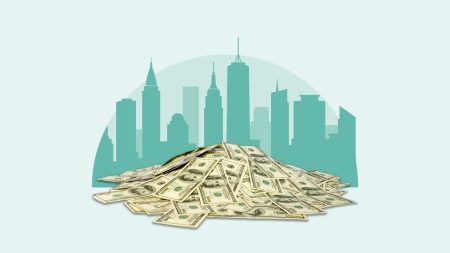Key takeaways
- A negative balance on a credit card is typically a positive sign, indicating that the consumer has overpaid for something or received a statement credit.
- Negative balances can result from refunds, statement credits or autopay settings.
- If a credit card account with a negative balance is closed, the issuer will typically refund the money before closing the account.
Your credit card balance represents the purchases you’ve made during a billing cycle, as well as any interest charged. If you pay off your credit card each billing cycle, you will have a zero balance.
However, if you decide to carry a balance on your credit card, you’ll be responsible for paying that balance plus whatever interest is applied. But what does it mean if you have a negative balance on your credit card?
What does a negative balance on a credit card mean?
In most cases, a negative balance is not great news. For instance, no one wants a negative balance on their bank account. However, the reasons for a negative credit card balance are actually mostly positive.
Credit card statement balances show the total dollar amount you owe your credit card company at the end of your monthly billing cycle. All of your purchases, cash advances and balance transfers make up your statement balance. This may also include:
- Refunds
- Statement credits
Money that is credited back to your account in this way will show up with a minus symbol in front of the dollar amount. Negative credit card balances act as a kind of temporary credit on your account.
For example, if you have a zero balance, your credit card issuer will give your credit limit a temporary increase. So, if you have a limit of $5,000 and receive a statement credit for $170, your credit limit will temporarily be $5,170. Once you have spent the negative balance, your credit limit will return to $5,000. The temporary increase of a negative credit card balance can also lower your credit utilization, potentially boosting your credit score.
How can you get a negative balance on your credit card?
The reason a negative card balance is mostly positive is that your negative balance probably means you overpaid for something at some point. That might mean paying for a purchase that requires a refund or paying off a balance before a statement credit is issued. The negative balance is, thankfully, a sign that your money is being returned to you.
One reason could be the result of a refund. Whether you’ve returned a purchase or gone through the process of disputing a charge, a negative balance is a sign that your funds were returned.
For example, you buy a sweater for $75, but decide to return it. If your credit card balance is zero at the time of your refund, your balance will be -$75.
Another reason for a negative balance is if you earn a statement credit after you’ve paid your balance. Cash back rewards cards often offer cash back in the form of a statement credit. If the statement credit is larger than the amount of your balance when it’s issued, you will see a negative credit card balance. This could easily happen if you have autopay set up for a fixed amount on your credit card account. It could also happen if you pay off purchases before you receive your credit card bill.
What should you do about a negative balance?
If you notice that you have a negative balance on your credit card, there is no need to panic. You don’t have to do anything, but here are some possible actions to take:
Call your issuer
If you have any doubts about why you have a negative balance, call your issuer. The card issuer should be able to give you a clear explanation of what caused the negative balance. Most card issuers have a specific way of handling negative balances, so a call can give you some clarification.
Request a deposit
When you have a negative balance, you can request that the amount of that balance be deposited into your bank account. You can do this because a negative balance is similar to a statement credit.
If you’d prefer, you can also request a check, money order or even cash in the amount of the negative balance. Simply call your card issuer and let them know that you would like the negative balance to be converted. A benefit to having your negative balance converted to a deposit is that you won’t have to worry about interest being applied when you spend it.
Make a purchase
If you have a negative credit card balance, you don’t have to actually do anything. You can make purchases on your credit card as you normally would. Just keep in mind that you have a sort of short-term credit for whatever the negative balance amount happens to be.
For example, if you have a balance of -$100 on your rewards card, you won’t add to your new balance until you’ve spent more than $100. You don’t have to spend a negative balance immediately or all at once. You can simply maintain your normal spending habits until your balance is back to zero.
What do you do with a negative balance on a closed credit card account?
If you are closing a credit card account with a negative balance, the issuer will most likely refund the money before officially closing the account. There are a handful of scenarios where it may not be that simple, however.
For instance, you may find yourself with a negative balance as your account is about to officially close. Your online access may already be cut off at this point, so you’ll want to contact your issuer and request a refund as soon as possible.
The bottom line
At first mention, negative balances give off a negative connotation. You may think something is wrong when, in fact, it is quite the opposite.
But keep in mind that negative balances reflect money owed to you by your credit card company. It may be due to a refund from a third party or a statement credit from your credit card issuer directly. But no matter the cause of the negative balance, it is usually a positive scenario for the consumer.
Read the full article here









